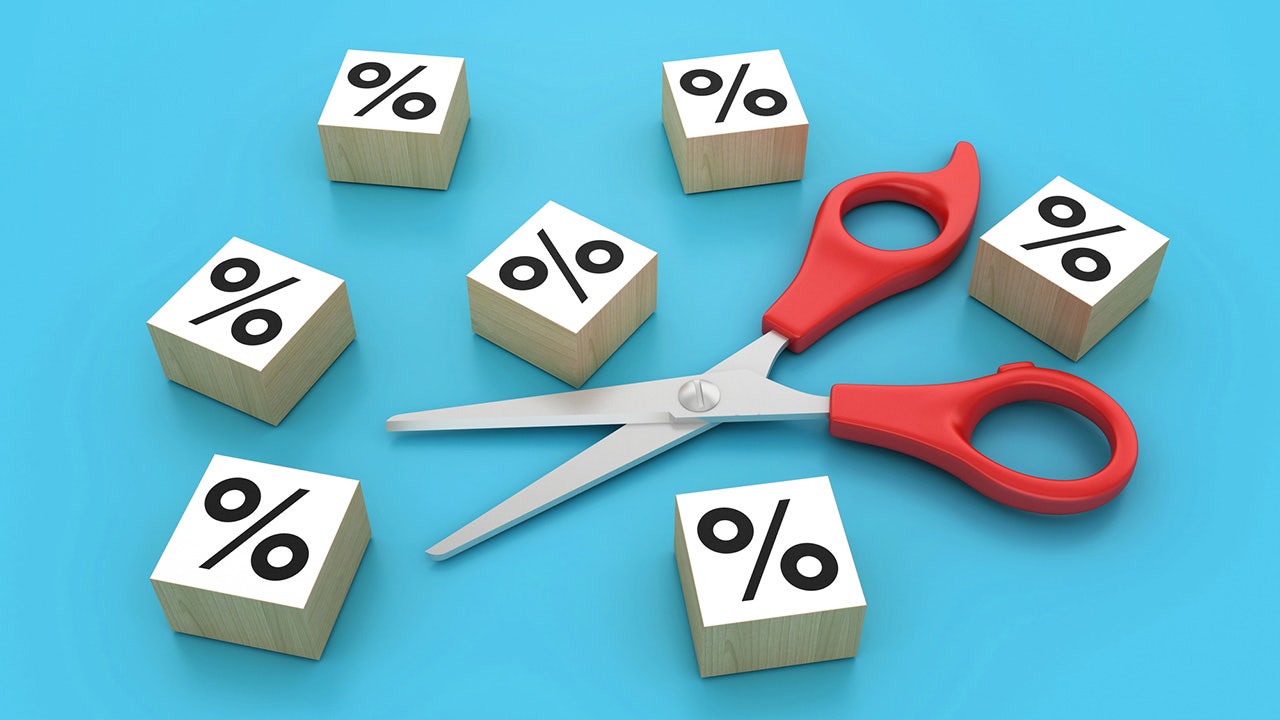Rates were cut by a quarter of a percentage point. (iStock )
The Federal Reserve just cut interest rates one more time this year. In their recent meeting, the Fed decided to cut rates by a quarter of a percentage point, dropping rates to 4.25% to 4.5%. This move was largely expected by economists.
The Fed cited indicators of an expanding economy and an easing labor market after its other rate cuts. This is the third time rates have been cut this year, but economists don’t expect as many cuts in 2025.
“The median member now expects that there will only be two cuts in 2025 and that the federal funds target will be 3% in the long run,” MBA Senior Vice President and Chief Economist Mike Fratantoni said in a statement. “MBA forecasts that the federal funds rate will only drop to 3.75% this cycle.”
The unemployment rate also remains low, and inflation is making slow but steady progress towards the committee’s 2% goal, both factors that created a bottleneck in the final decision to cut rates.
“While the unemployment rate has increased over the past year, and inflation has trended down, in recent months, inflation has plateaued,” Fratantoni said. “It was not surprising to see a dissent at this meeting, with one member voting to keep rates steady.”
With the latest rate cut, The Federal Reserve hopes to inch closer to their inflation growth and ease the unemployment rate.
Worried about the state of the economy? You could consider paying down high-interest debt with a personal loan at a lower interest rate. Visit Credible to speak with a personal loan expert and get your questions answered.
INFLATION SEES THE LOWEST ANNUAL RISE SINCE 2021
Home sales likely to increase in 2025
The housing market has faced a roller coaster of a year, but certain aspects are expected to raise home sales in 2025. Real estate experts predict a slow thaw for mortgage rates, giving prospective buyers who have been priced out of the market in recent years more wiggle room.
Many housing market measures are trending closer to historical norms, showing signs of an improved market in the new year. Listings are still lower than before the pandemic, but there are significantly more than in March, when there was a 25% deficit, according to Zillow.
Buyers shouldn’t expect an entirely smooth path when buying in 2025, however. For many, 2025 looks eerily similar to the volatile market of 2024.
“There’s a strong sense of déjà vu on tap for 2025. We are once again expecting mortgage rates to get better gradually, and opportunities for buyers should follow, but be prepared for plenty of bumps on that path,” Zillow Chief Economist Skylar Olsen said.
Shoppers looking to move in the slower winter months have an advantage. Sellers who have been waiting for rates to drop may be looking to unload their homes while interest rates are on the decline.
“Those shopping this winter have plenty of time to choose and a relatively strong position in negotiations,” Olsen said.
If you’re looking to purchase a home, consider visiting Credible to find the best mortgage rate for your financial situation.
THE US ADDED 818,000 FEWER JOBS THIS YEAR THAN ORIGINALLY ESTIMATED
Mortgage rates and home prices expected to fluctuate over the next year
More listings may be on the horizon, but buyers shouldn’t expect rock bottom mortgage rates any time soon. Prices also aren’t set to drop just yet. Prices are expected to grow by 3.7%, Realtor.com recently reported.
Mortgage rates are also expected to remain in the 6% range, with fluctuations over the year, much like 2024. Due to these small improvements, single family home listings are expected to grow by nearly 14%, according to Realtor.com.
Sellers in certain highly desirable areas will still hold the power in 2025. Inventory is improving, but it’s still limited compared to years past. This gives sellers the upper hand when negotiating prices.
How the newest presidential administration will factor in the housing market recovery process is difficult to predict, but there’s a potential for a “Trump Bump”, as Realtor.com calls it.
“While President-elect Trump can work quickly with his administration to implement some regulatory changes, other policies that will affect housing, such as tax changes and broad deregulation, require the cooperation of other branches and levels of government,” Realtor.com Chief Economist Danielle Hale said.
“The size and direction of a Trump bump will depend on what campaign proposals ultimately become policy and when,” Hale said. “For now, we expect a gradual improvement in housing market dynamics powered by broader economic factors. The new administration’s policies have the potential to enhance or hamper the housing recovery, and the details will matter.”
If you think you’re ready to shop around for a home loan, use Credible to help you easily compare interest rates from multiple lenders in minutes.
FHFA ANNOUNCES HIGHER MORTGAGE LOAN LIMITS FOR 2025
Have a finance-related question, but don’t know who to ask? Email The Credible Money Expert at [email protected] and your question might be answered by Credible in our Money Expert column.

 Blog Post1 week ago
Blog Post1 week ago
 Economics1 week ago
Economics1 week ago
 Finance1 week ago
Finance1 week ago
 Personal Finance1 week ago
Personal Finance1 week ago
 Accounting1 week ago
Accounting1 week ago
 Economics1 week ago
Economics1 week ago
 Personal Finance6 days ago
Personal Finance6 days ago
 Personal Finance1 week ago
Personal Finance1 week ago










